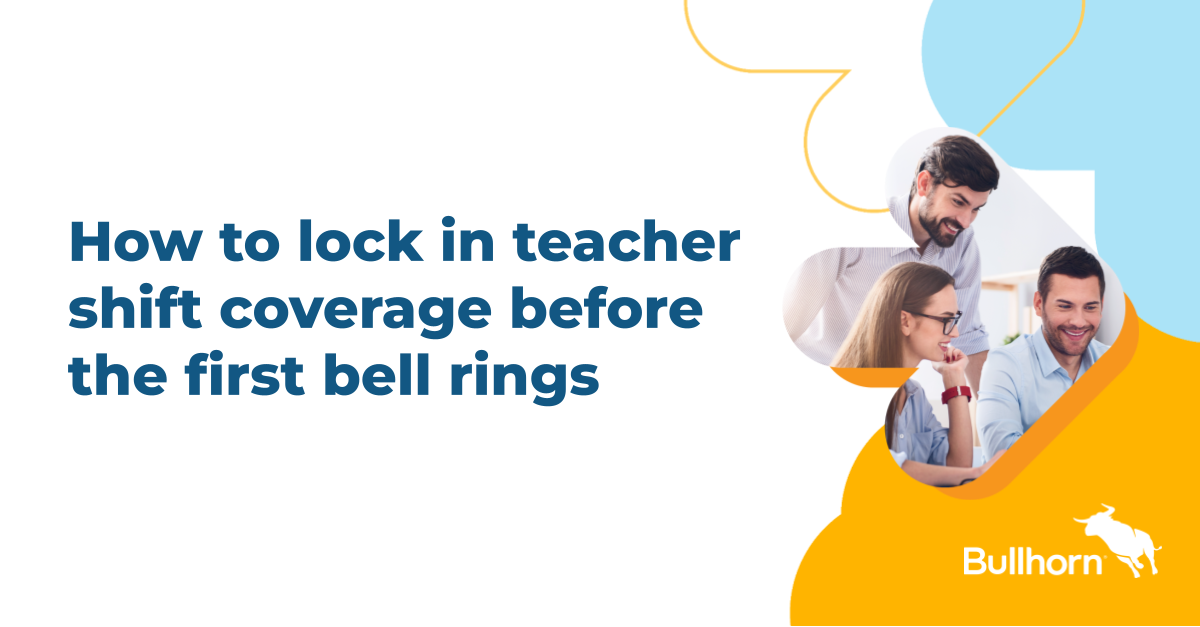How to: Redeploy More Workers

Are you prepared for when your top talent finishes an assignment? In today’s competitive staffing market, an effective redeployment strategy can provide your firm with a valuable edge. Redeploying workers also makes sense: you’ve already sourced, screened, and built a relationship with this candidate, and they’ve demonstrated hireability, too.
Redeployment isn’t always easy, but if you can line up the next assignment for your talent as soon as they finish their previous assignment, you’ll deliver an incredible experience for your talent and for your clients. Here’s how to build a successful redeployment strategy in three steps.
1) Understand your redeployment numbers in order to improve them
What is your firm’s current redeployment rate? According to research conducted by CareerBuilder, less than six percent of staffing firms actually measure redeployment rate, and firms that do measure redeployment only report rates between 10 to 30 percent. While a one-hundred percent rate isn’t practical or feasible, you most likely can up your rate. If your firm isn’t already tracking this, it’s time to start. Measuring this baseline allows your firm to track progress as you continue to implement your strategy.
If you manage a team, consider building a redeployment strategy into your training program so that recruiters are fully equipped to make best practices from the moment they’re hired
Track redeployment rates for each recruiter to determine if a low rate may be a sign of a larger problem, such as continued poor candidate experience or failure to check in with placed workers. Once you’ve spotted the individual recruiters with the highest redeployment rates, reward them! Working redeployment into their evaluations or bonusing them is a great strategy to convert a higher redeployment rate across the board for your firm.
2) Candidate experience counts: do workers enjoy working with your firm?
Redeployment isn’t just about having the next job lined up for your high-quality candidates–they have to want to work with you again! Providing a positive candidate experience can make all the difference when it comes to having repeat business. Follow these useful tips and you’ll have workers coming back for more jobs in no time.
It’s no secret that having good communication is key to the success of a recruiter. And candidates have spoken: recruiters sometimes stink at communicating. One study found that poor communication is actually the number one complaint from candidates about the application process, and three out of five candidates feel better communication throughout and after the application process would make the most positive impact.
Responding to candidates in a timely manner plays a critical in the likelihood that a candidate returns to you for their next position. Always reach out and check in with the worker even if you haven’t heard any news from the hiring manager. One of the most common mistakes is failing to reach out to your workers. Even if they have nothing new to share, reaching out will show them you haven’t forgotten about them and can keep you top of mind when they’re looking for their next role.
Make sure onboarding is as quick and easy as possible. A painful onboarding process is one of the fastest ways to ensure your worker won’t be returning to you once their assignment is up. Remember, time spent during the onboarding period is time on the clock that worker won’t be getting paid, so it’s important your firm gets this right quickly and efficiently.
It’s also important to measure the satisfaction levels of your candidates. While this feels obvious, more firms are failing to do so than you’d expect. Less than a third of staffing firms conduct interviews with candidates about their experience, with only two out of five measuring the satisfaction of their candidates. In order to begin improving your candidate experience, you need to first begin by understanding what is and isn’t working—so the next time you’re speaking with your candidate, ask them to measure their satisfaction after each assignment so that you’re better prepared for redeployment in the future.
3) Leverage your staffing technology to identify and rehire qualified workers
Do you know when and how to reach out to workers who are ripe for redeployment? If your staffing technology doesn’t already assist with this it may be time for an upgrade. Having a solution that can identify which candidates will be ready for redeployment and how much they contribute to your business are two telltale signs you’ve found the right staffing technology. Follow these tips to unlock the full potential of your redeployment efforts.
Knowing when to reach out to workers is critical in the redeployment process. Your candidates don’t want to wait for your call once they’ve finished up their assignment–by then they want the next one already lined up. The best staffing technologies have automated “Starts and Ends” dashboards that can track this information so that it’s visible and top-of-mind for recruiters. This dashboard creates calendars for you to view who is starting and finishing up assignments so that you’ll never miss another redeployment opportunity.
With the right strategy in place, you can see tremendous improvements to your redeployment rate and improve candidate and client satisfaction in the process.
Want to read more about the topics that matter most to staffing professionals? Subscribe to the Bullhorn Blog for news, tips, interviews, trends and more.









